
"Auld Lang Syne" is a popular song, particularly in the English-speaking world. Traditionally, it is sung to bid farewell to the old year at the stroke of midnight on New Year's Eve/Hogmanay. By extension, it is also often heard at funerals, graduations, and as a farewell or ending to other occasions; for instance, many branches of the Scouting movement use it to close jamborees and other functions.

John Quincy Adams Ward was an American sculptor, whose most familiar work is his larger than life-size standing statue of George Washington on the steps of Federal Hall National Memorial in New York City.

James Pittendrigh MacGillivray was a Scottish sculptor. He was also a keen artist, musician and poet. He was born in Inverurie, Aberdeenshire, the son of a sculptor, and studied under William Brodie and John Mossman. His works include public statues of Robert Burns in Irvine, Lord Byron in Aberdeen, the 3rd Marquess of Bute in Cardiff, John Knox in Edinburgh's St Giles Cathedral, and William Ewart Gladstone in Coates Crescent Gardens, Edinburgh.

George Edwin Bissell was an American sculptor.

New York City's 843-acre (3.41 km2) Central Park is the home of many works of public art in various media, such as bronze, stone, and tile. Many are sculptures in the form of busts, statues, equestrian statues, and panels carved or cast in low relief. Others are two-dimensional bronze or tile plaques. Some artworks do double-duty as fountains, or as part of fountains; some serve as memorials dedicated to a cause, to notable individuals, and in one case, to a notable animal. Most were donated by individuals or civic organizations; only a few were funded by the city.
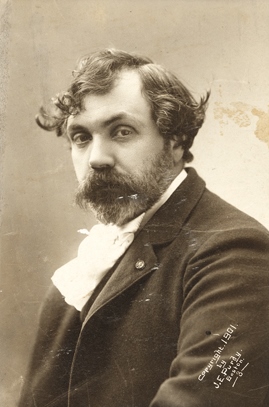
Henry Hudson Kitson was an English-American sculptor who sculpted many representations of American military heroes.
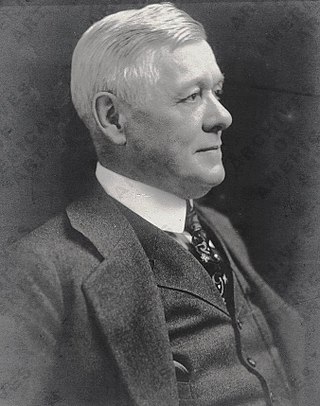
John Massey Rhind was a Scottish-American sculptor. Among Rhind's better known works is the marble statue of Dr. Crawford W. Long located in the National Statuary Hall Collection in Washington D.C. (1926).

Collyer Monument is an historic monument to firefighters in Mineral Spring Park, at the corner of Mineral Spring Avenue and Main Street, in Pawtucket, Rhode Island, United States. The monument was built in 1890 by the sculptor Charles Parker Dowler to honor Samuel Smith Collyer, a fallen Pawtucket Fire Chief. The life-size bronze sculpture stands atop a pedestal of Westerly granite, which has a bronze plaque depicting the fatal accident while the reverse bears an inscription. The memorial represents a significant example of monumental work of the period and an early example of local civic pride. The monument was added to the National Register of Historic Places in 1983.
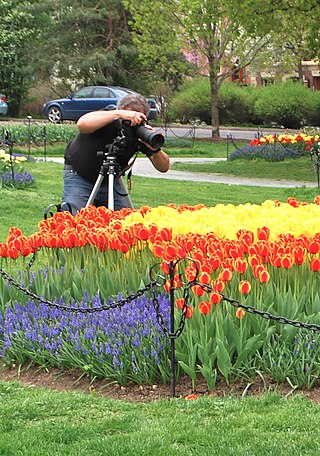
Washington Park in Albany, New York is the city's premier park and the site of many festivals and gatherings. As public property it dates back to the city charter in 1686, and has seen many uses including that of gunpowder storage, square/parade grounds, and cemetery. The park is often mistaken as being designed by Frederick Law Olmsted, as it incorporate many of the philosophical ideals used by Olmsted when he designed Central Park in Manhattan. The park is about 81 acres (33 ha) in size with the 5.2-acre (2.1 ha) Washington Park Lake, a roughly 1,600-foot-long (490 m) and 140-foot-wide (43 m) lake, in the southwestern corner.
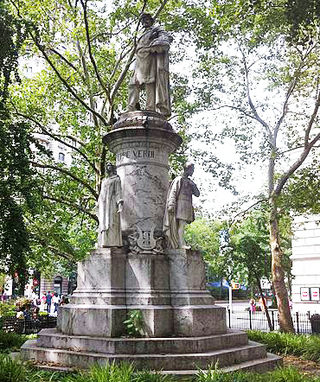
The Giuseppe Verdi Monument is a sculpture honoring composer Giuseppe Verdi in Verdi Square Park in Manhattan, New York City. The statue was created by Italian sculptor Pasquale Civiletti.

The Thomas A. Hendricks Monument is a public artwork by American artist Richard Henry Park and is located on the southeast corner of the Indiana Statehouse grounds in Indianapolis, Indiana. The monument is a tribute to Thomas A. Hendricks, the 21st Vice President of the United States. Hendricks was a former U.S. Representative and U.S. Senator from Indiana. He was the 16th Governor of Indiana and led the campaign to build the Indiana Statehouse.

The General William Tecumseh Sherman Monument is an equestrian statue of American Civil War Major General William Tecumseh Sherman located in Sherman Plaza, which is part of President's Park in Washington, D.C., in the United States. The selection of an artist in 1896 to design the monument was highly controversial. During the monument's design phase, artist Carl Rohl-Smith died, and his memorial was finished by a number of other sculptors. The Sherman statue was unveiled in 1903. It is a contributing property to the Civil War Monuments in Washington, D.C. and to the President's Park South, both of which are historic sites listed on the National Register of Historic Places.

The statue of Robert Burns in Milwaukee, Wisconsin, is a work of public art by the Scottish artist William Grant Stevenson, RSA. The bronze statue, of the Scottish national poet Robert Burns, stands on a plinth of Nova Scotia pink granite with two bronze bas relief panels. The monument was donated to the City of Milwaukee by James A. Bryden.

Albert W. Fuller (1854-1934) was an American architect practicing in Albany, New York.

Giovanni Turini was an American sculptor, born in Verona, Italy. He immigrated to the United States in the late 1860s. He is best remembered as a portrait and historical sculptor.

The Cotter's Saturday Night is a poem by Robert Burns that was first published in Poems, Chiefly in the Scottish Dialect in 1786.

James Thom was a Scottish sculptor; his sculptures of characters from Scottish literature were immediately successful.
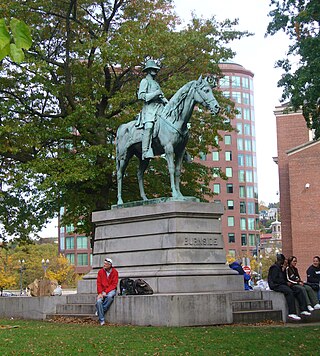
Major General Ambrose E. Burnside, also known as the Ambrose Burnside Monument, is a monumental equestrian statue in Providence, Rhode Island, United States. The statue, located in the city's Burnside Park, was designed by sculptor Launt Thompson and depicts Ambrose Burnside, an officer in the Union Army during the American Civil War who later served as the governor of Rhode Island. Ambrose had died in 1881 and the project to erect a statue in his honor began shortly afterwards. It was dedicated on July 4, 1887 in a large ceremony that included several notable guests of honor, such as General William Tecumseh Sherman, Colonel Robert Hale Ives Goddard, and the governors of both Connecticut and Rhode Island. The monument was originally located in Exchange Place, but it was moved to its current location in the early 1900s. As part of the move, the pedestal was replaced with one designed by William R. Walker.




















